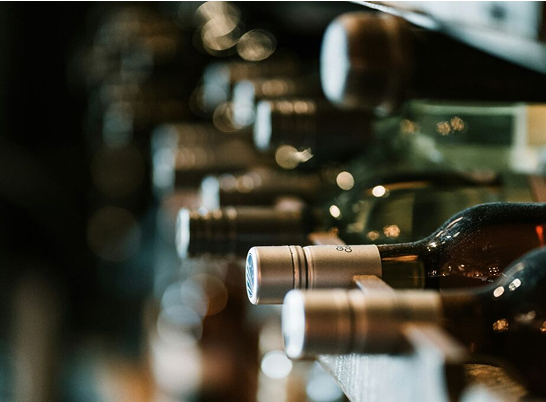How France Is Adapting to Tariffs and the Futility of Wine Futures
Jun 26th 2025
Do you buy Bordeaux futures? If so, your probably wondering what's going on. Is this a prime opportunity to buy Bordeaux futures?
Bordeaux wine campaigns got kicked off after years of upswings in scores, volumes and prices. With inflation, war, and global economic strain from major buyers in the USA, UK, China and Russia, there is no doubt that the Bordeaux wine futures are in flux. Buyers aren't buying what they use to because their customers (the consumer) aren't drinking like they use to. Additionally, high net worth individuals looking for a store-of-value have diversified across many spectrums of collectibles. Cash is sitting on the sidelines. Investors and collectors are seeking opportunities from asset reduction sales in real estate and other markets. Here's a snapshot of what we see at Estate Wine Brokers.
Tariff Relief: A Short-Term Lifeline
In response to renewed U.S. tariffs of up to 20% (and even threats of 200%), Brussels in May 2025 greenlit a €5 billion emergency export scheme. This initiative allows French wineries to expedite shipments to the U.S. before tariffs hit and offers state backed insurance against political risk sheppardfrenchdesk.com+15ainvest.com+15apnews.com+15theguardian.com+2reuters.com+2ainvest.com+2. It’s a lifeline—but only a temporary one, valid from May 8 to July 8, 2025.
Major producers, especially Champagne houses like Leclerc Briant and Moët, preemptively shipped mega volumes stateside, up to 3 million bottles, mitigating immediate tariff exposure reuters.com+1ainvest.com+1thetimes.co.uk. Still, smaller growers without big budget exporters are hurting hardest.
2. Strategic Stockpiling & Price Pressure
The U.S. wine trade, anxious about looming tariffs and a weak dollar, is cutting back on en primeur campaigns for Bordeaux 2024, futures prices hit decade low levels, yet U.S. buyers remained “unenthused” reuters.com+15winespectator.com+15m.economictimes.com+15. This slowdown directly reduces winemakers' upfront cash flow, creating challenges financing harvests and cold stability for cellars.
To maintain U.S. store presence, many producers are slashing wholesale margins or absorbing costs. This signals that long-awaited vintage investments may yield lower returns in the short term .
3. Diversification: New Markets, New Partners
French exporters are ramping up outreach in Asia and Middle East markets to offset shrinking U.S. demand vin-x.com. At home, wine boards are also encouraging domestic consumption through tourism and consumption incentives to rejuvenate the sagging sector.
4. Wine Futures: The Shifting Sentiment
Once the backbone of Bordeaux investment, en primeur campaigns are losing appeal. The triggering factors:
-
Weak 2024 vintage, and lackluster barrel samples.
-
Macro uncertainties: tariff volatility and a soft dollar undermine buyer confidence.
-
Retailers pulling back, reducing speculative purchases winespectator.com+2vin-x.com+2sheppardfrenchdesk.com+2winespectator.com+1vin-x.com+1.
Yet analysts suggest a silver lining: for investors, snagging futures now may avoid tariffs and lock in historically low prices, potentially kickstarting a rebound when tensions ease .
Future Landscape for High-End French Wine Collectors
A. Understanding the Immediate Risks
Collectors face short-term risk exposure, price volatility, unpredictable supply, and distribution delays. Futures may no longer deliver the early bird benefits they once did, as premiums are slashed and shipping decisions postponed.
B. Opportunities in Distressed Pricing
The downturn presents a strategic buying window. Collectors with long term horizons could acquire top tier Bordeaux futures at their lowest prices in years. If geopolitical tensions deescalate during the aging period, these wines mature tariff free in bonded storage, unlocking potential gains .
C. Shifting Supply Chains and Modalities
Expect a shift toward:
-
On-the-water purchases—shipping delayed until after tariffs may normalize;
-
Bonded warehouse delivery, allowing import deferral until sale.
High net worth collectors and institutions may pivot toward the low risk import model, reducing reliance on traditional en primeur commitments.
D. Long Term Market Adjustments
If tariffs linger, French producers may restructure their business models forming new trade partnerships and channels in Asia/Middle East, reducing U.S. dependency. For collectors, this means:
-
New geography will shape rarity, vintage releases, and price benchmarks.
-
Secondary-market liquidity may shift as global demand patterns realign.
Final Thoughts
France’s multi-pronged response which includes emergency EU funding, stockpiling, diversification and price adaptation shows resilience in the face of trade headwinds. But the transforming dynamic around wine futures is crucial:
-
Short term volatility means caution is warranted.
-
Value opportunities exist for long term investors.
-
Structural shifts (logistics, markets) will redefine what "high-end" means in 5–10 years.
For collectors now, the key questions are:
-
Do you believe tariffs will be resolved before the wine is released?
-
Are supply chains flexible enough to exploit bonded shipping?
-
Can you capitalize on socialized pricing dislocations?
Answering these will determine whether en primeur remains a core investment tool, or becomes a relic of a more predictable era.

